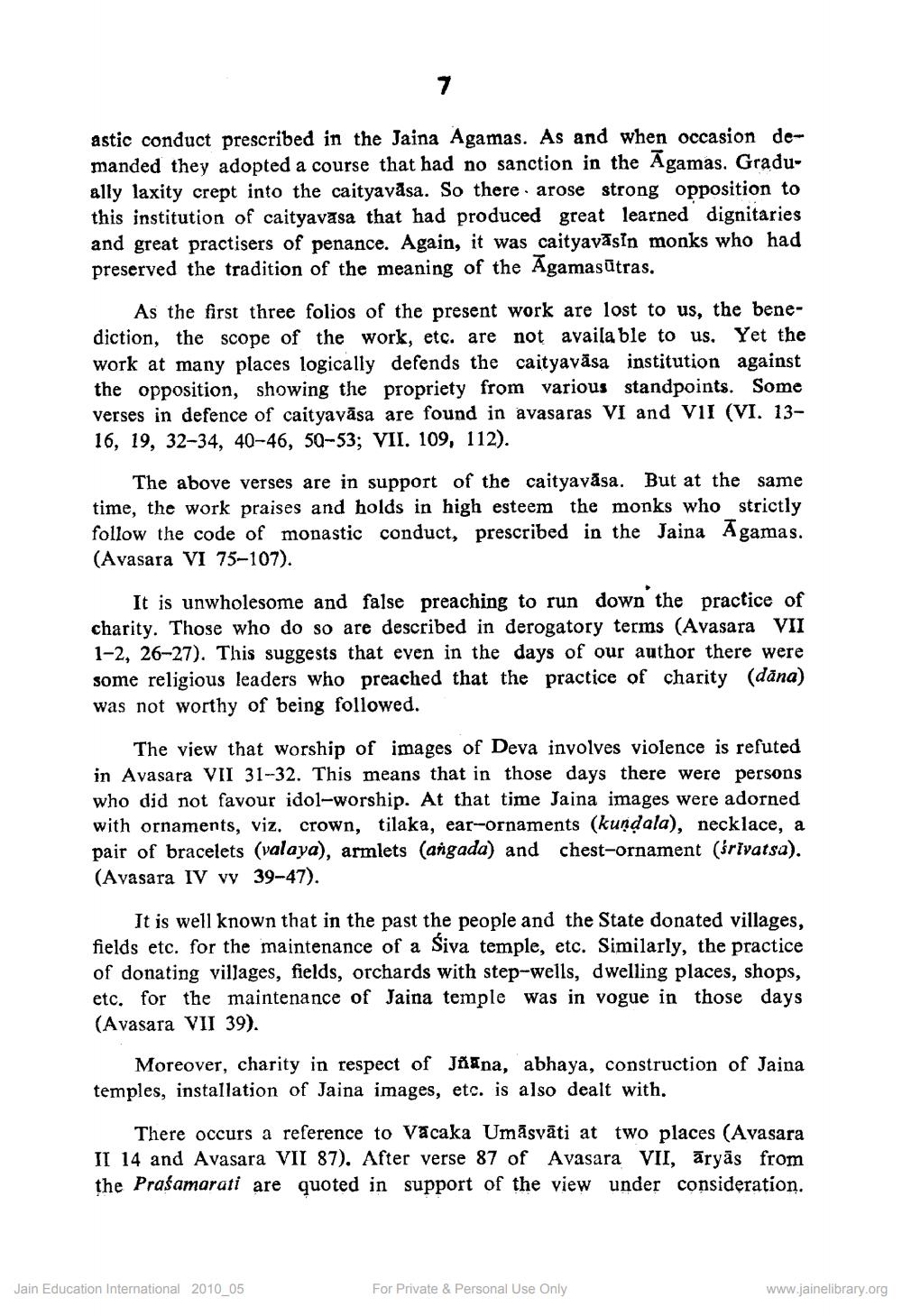________________
astic conduct prescribed in the Jaina Agamas. As and when occasion demanded they adopted a course that had no sanction in the Agamas. Gradually laxity crept into the caityavāsa. So there · arose strong opposition to this institution of caityavasa that had produced great learned dignitaries and great practisers of penance. Again, it was caityavāsin monks who had preserved the tradition of the meaning of the Agamasutras.
As the first three folios of the present work are lost to us, the benediction, the scope of the work, etc. are not available to us. Yet the work at many places logically defends the caityavāsa institution against the opposition, showing the propriety from various standpoints. Some verses in defence of caityavāsa are found in avasaras VI and VII (VI. 1316, 19, 32-34, 40-46, 50-53; VII. 109, 112).
TL
The above verses are in support of the caityavāsa. But at the same time, the work praises and holds in high esteem the monks who strictly follow the code of monastic conduct, prescribed in the Jaina Agamas. (Avasara VI 75-107).
It is unwholesome and false preaching to run down the practice of charity. Those who do so are described in derogatory terms (Avasara VII 1-2, 26-27). This suggests that even in the days of our author there were some religious leaders who preached that the practice of charity (dāna) was not worthy of being followed.
The view that worship of images of Deva involves violence is refuted in Avasara VII 31-32. This means that in those days there were persons who did not favour idol-worship. At that time Jaina images were adorned with ornaments, viz. crown, tilaka, ear-ornaments (kundala), necklace, a pair of bracelets (valaya), armlets (angada) and chest-ornament (srivatsa). (Avasara IV vy 39-47).
It is well known that in the past the people and the State donated villages, fields etc. for the maintenance of a Siva temple, etc. Similarly, the practice of donating villages, fields, orchards with step-wells, dwelling places, shops, etc. for the maintenance of Jaina temple was in vogue in those days (Avasara VII 39).
Moreover, charity in respect of Jñana, abhaya, construction of Jaina temples, installation of Jaina images, etc. is also dealt with.
There occurs a reference to vacaka Umāsvāti at two places (Avasara II 14 and Avasara VII 87). After verse 87 of Avasara VII, āryās from the Praśamarati are quoted in support of the view under consideration.
Jain Education International 2010_05
For Private & Personal Use Only
www.jainelibrary.org




